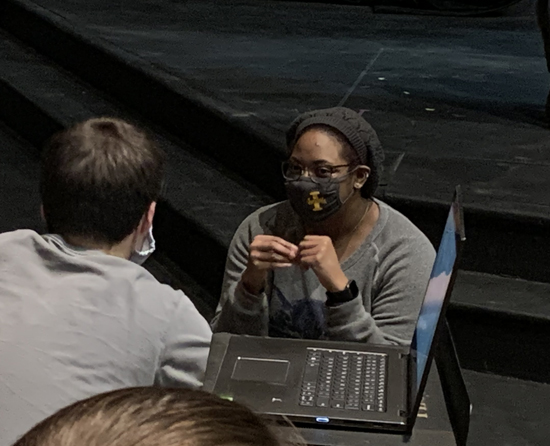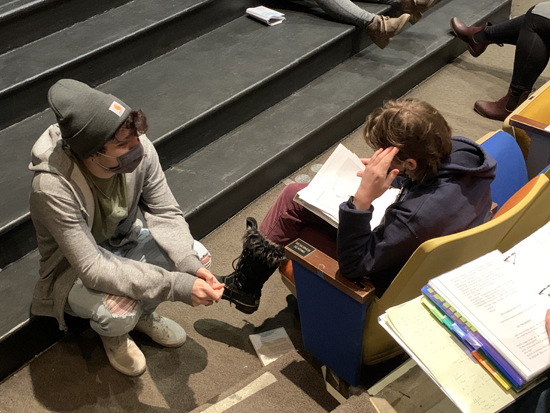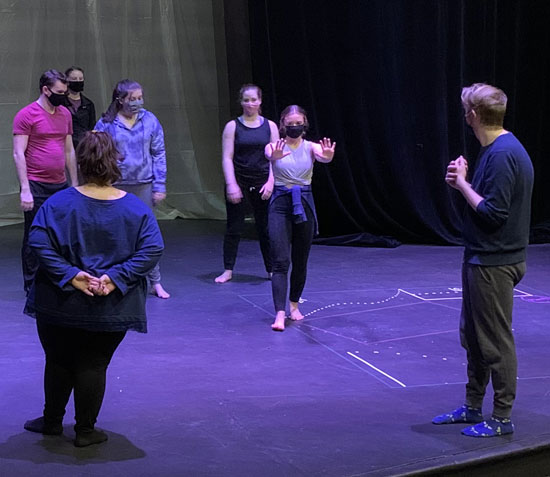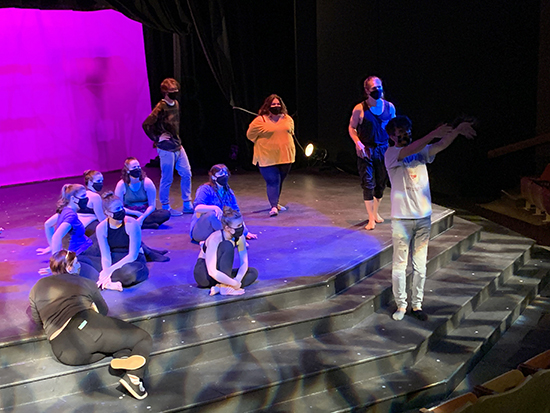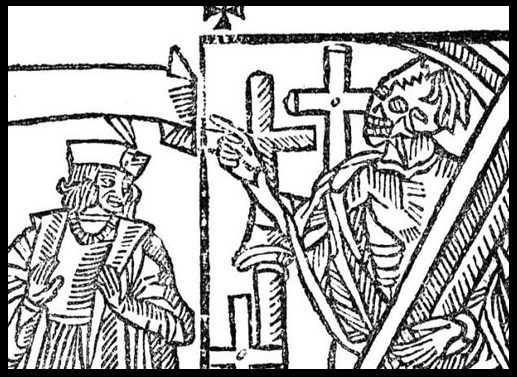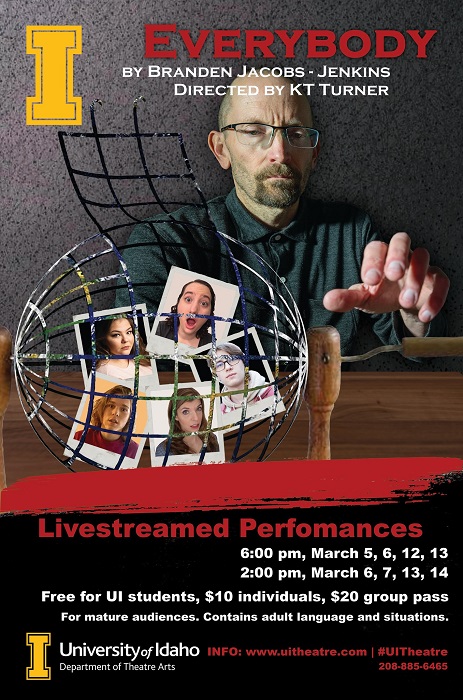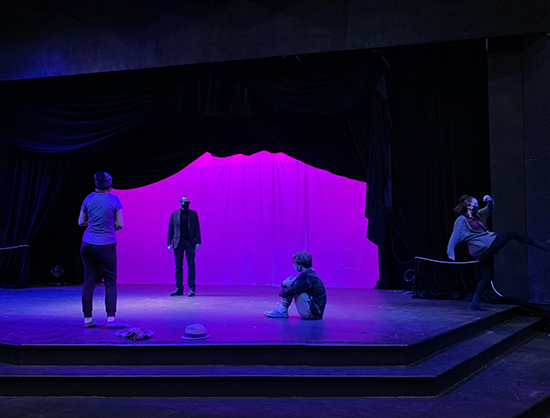
Everybody by Branden Jacobs-Jenkins
directed by KT Turner
dramaturgy by Ariana Burns
(Section of frontispiece from edition of Everyman published by John Skot c. 1530.)
The Danse Macabre allegory discussed in a previous blog post probably claimed antecedents in pagan traditions of dancing in burial grounds. Branden Jacobs-Jenkins’ script called for a Danse Macabre after Everybody meets with Love and before Death returns to begin the journey.
The University of Idaho Theatre Arts Department planned Everybody to be a virtual production from the start. With this knowledge, director KT Turner and her designers began pushing what they’d learned over the school year working in Zoom. What grew out of those meetings was a hybrid production that involved prerecording elements in the studio and on the Hartung stage which will be fed into live performances.
The big set piece is the Danse Macabre which involved efforts from the entire design team (set, lights, sound, costumes). Choreographed by Victoria Zenner, it was filmed on the Hartung stage. We had access to the Hartung for only a few days for rehearsal and filming.
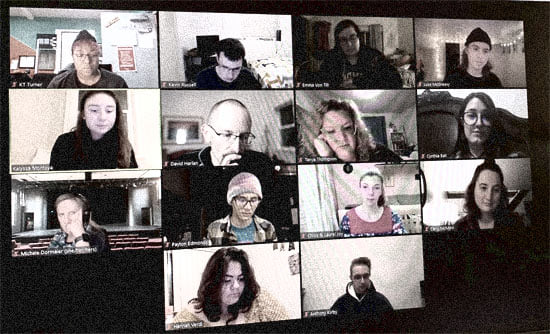
The rest of the time rehearsals were on Zoom from the actors’ homes and offices.
Typically for Zoom productions here, a backdrop is provided for the actor performance areas. For Everybody, the backdrop would be a combination curtain and green screen to display an image of the set on the Hartung stage.
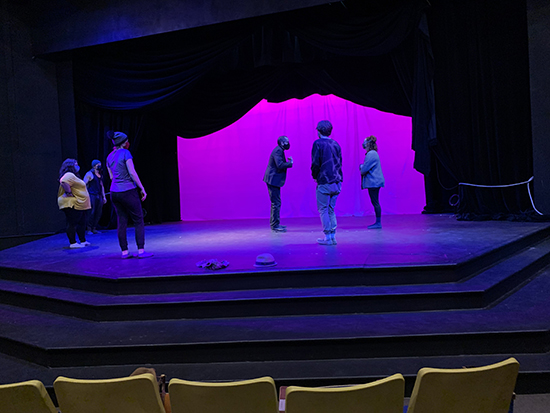
While Zoom rehearsals went on, lighting and scenic (set by Brindle
Brundage) were testing ideas at Hartung. The curtains at the proscenium limited upstage lighting positions to back light performers.
They looked to where they could and couldn’t reach and how to use that to their best advantage. They also tested different plastics for the upstage curtain to create silhouettes on.
Our theatrical rehearsals were the first at Hartung in almost a year when the pandemic shuttered The Moors one day after its opening. For the short period we were there, strict safety protocols were in place along with constant reminders to watch out for each other.
Besides the Danse, there were also a couple other elements that needed to be worked out and filmed like transitions between the live performances and the short recordings. And through the rehearsal process, the show continually develops and changes.
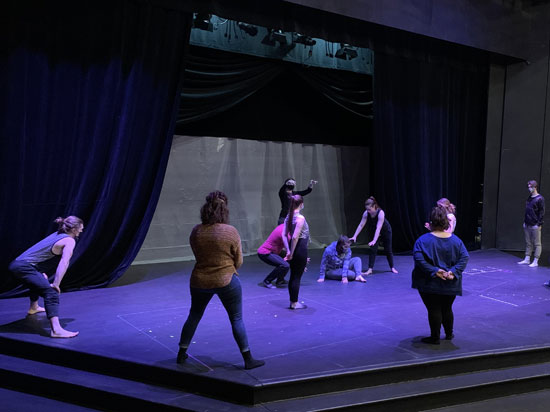
After watching the dance, KT decided to interweave the actors into it instead of having them be outside observers. Victoria began teaching them the routine.
Then Idaho-always known for unpredictable weather-brought a snow storm which closed campus and we lost a precious rehearsal day at Hartung. The actors were still learning the routine. We would not be able to make up the day before shooting that weekend.
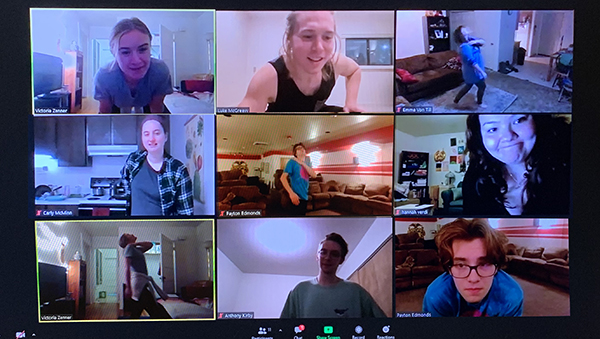
The decision was made to have dance practice on Zoom. The above composite image captures the humor and the frustration as the company met the challenge head on. Two days later, we returned to Hartung and were ready for filming.
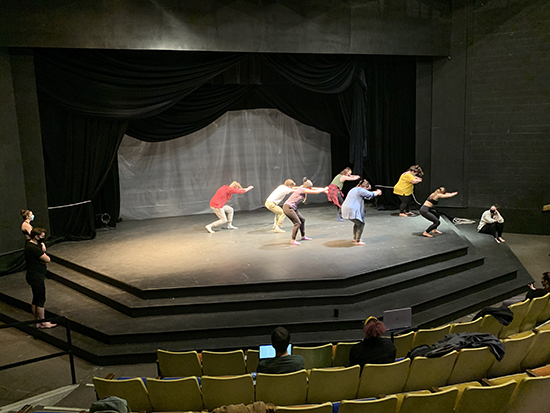
After several days filming, Christian is now editing the footage for technical rehearsals which begin on Saturday. This is the final process of stitching the production together for audiences to see starting March 5.
More information about ticketing can be found at the University of Idaho Theatre Arts Department’s webpage:
